Casio WSD-F21HR Review | Pro Trek Smart
This is a short Casio WSD-F21HR review, so I will go through and give my opinions and experiences on several aspects that stood out to me the most. Many of my regular readers won’t want to buy this sort of product but…bear with me…it is an interesting offering from Casio and is a good choice for the right person.

Setup and First Impressions
The WSD-F21HR is a big-cased, running & outdoors watch with a high-quality, yet normal-sized watch screen. Better than that, it has a dual-layered, always-on screen where an LCD-like display often pops up to save battery and still tell you the time. On the back, it has a top-end Valencell optical heart rate sensor.
Whilst the overall looks are not to my personal taste, I can see how others will like the rugged appeal of this watch and the Casio really is well-made; feeling very durable and sturdy, both of those characteristics are delivered within the limits of a ‘sensible weight’.

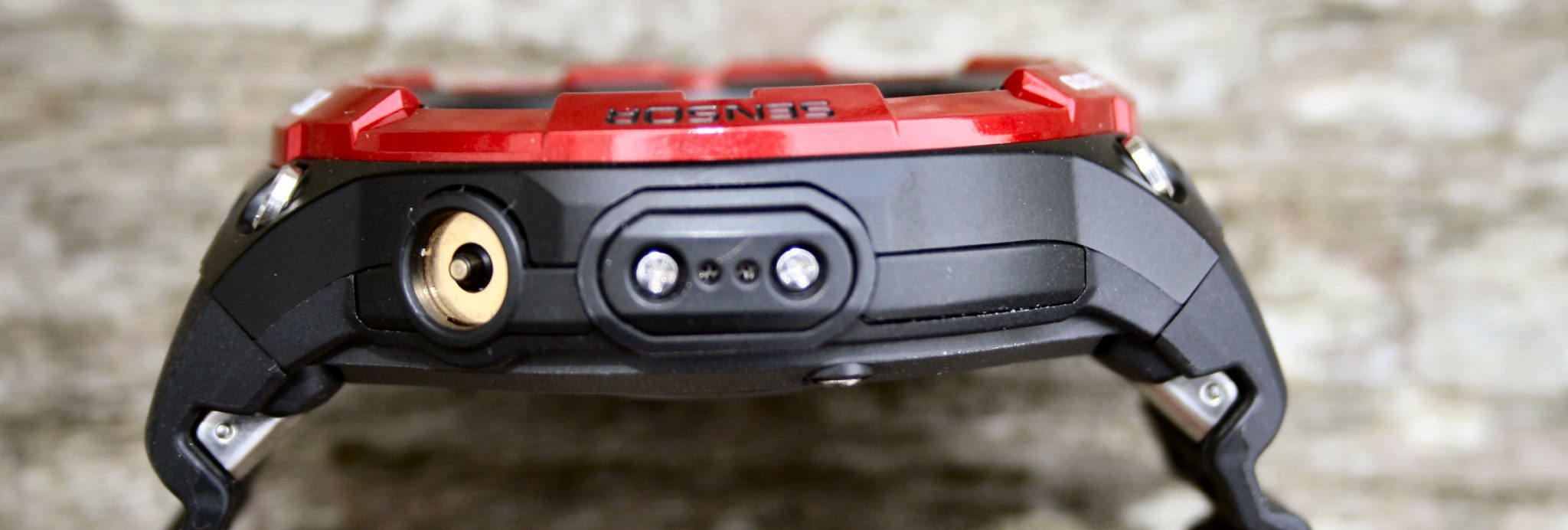
Let’s look at some of the exterior design details: the watch face is well-protected by the raised bezel; the removable strap will survive a nuclear holocaust; and, indeed, every aspect shouts DURABILITY from the metal casing to the glove-friendly, over-sized buttons.
The Valencell optical sensor on the rear IS a high-quality sensor but that’s nothing too unusual as the Valencell sensor is shared with other brands, most notably Suunto. If you prefer a more accurate chest strap then some WearOS apps will let you instead pair to external sensors.
WearOS requires that you set the WSD-F21HR up through your smartphone and that setup process should work well when using most modern, android phones. I have a few years-old Moto smartphone and the setup worked the first time (almost).
 The colour TFT screen has a VERY nice and detailed resolution with great, vivid colours. My only criticisms here would be that I would have liked a larger screen that is more visible in direct sunlight and I would like the touchscreen to work better.
The colour TFT screen has a VERY nice and detailed resolution with great, vivid colours. My only criticisms here would be that I would have liked a larger screen that is more visible in direct sunlight and I would like the touchscreen to work better.
Finally, the magnetic charger is poor. It’s best to buy the OPTIONAL clip because the charger’s magnet and connector are both not strong enough to properly hold the charger in place.
Casio Pro Trek Smart WSD-F21HR – Who will buy this?
It’s interesting to speculate at the sort of person who might buy this. Probably that won’t be someone looking at online reviews like this! More likely a potential buyer will be a dedicated lover of the outdoors calling by their local outdoors shop – in the UK that would be Cotswold and then the shopworkers can do their thing and sell the product almost as an impulse purchase. But the F21HR IS an expensive product for an impulse purchase and my experience of my local Cotswold (Kingston, UK) is that the shopworker was clueless about all of Casio’s products (and yes I REALLY did do that research!…sample of ‘one’ though)
So I think it will be a certain type of buyer that is attracted to the F21HR. Someone who meets ANY of these criteria
- Existing lovers of Pro Trek watches who perhaps already run off the beaten track
- A lover of the Casio aesthetic
- Someone who does serious outdoors runs and who is concerned about the durability of their device.
- An outdoors runner who really wants a Wear OS watch and the smart joys that will bring when linking to their Android smartphone. You might, for example, already use a specific Android smartphone app and want a watch that can run the WearOS version of that app (check to make sure there is one first!).
Someone who does their research and really wants a dedicated, multi-sport navigation device would probably choose something else. Someone who just wants a plain old outdoors running watch, again, would probably choose something else.
So the key positive differentiators for this watch are: it’s WearOS; it’s a Casio Pro Trek, and it’s ruggedly made. As we shall see if you need one of those features then the F21HR also delivers LOTS of nice-to-haves via its inbuilt Casio app and via other apps that are generally available on the Play Store for navigation, smart connectivity, running and LOTS more.
Casio Pro Trek Smart – WSD-F21HR Apps
FYI: I typically used either the GhostRacer WearOS app or the inbuilt Casio activity & tool apps, clearly, there are LOTS of other Wear OS apps that you might want to use that aren’t covered in this review.
If the screen resolution is important to you then you can avoid researching any Garmin watches which all have a relatively poor screen (apart from the latest Venu model). The Casio will give you a GREAT screen that’s good enough to show detailed maps via any one of several apps.

The WSD-F21HR is clearly competing for a share of your wallet as an outdoors running watch. Thus it comes pre-loaded with the Casio TOOL app that contains the Holy Trinity of outdoorsiness ie an Altimeter, Barometer and Compass (ABC). Competing watches like the Coros Vertix, Suunto 9 and Garmin Fenix 6 each have their own flavour of ‘ABC’, however, I would say the F21’s ABC is prettier!.
Also pre-loaded is Casio Sports/Activity app which makes use of the now-ubiquitous OPTICAL HEART RATE SENSOR and Casio makes good use of that with new screens for sports that include instant heart rate, heart rate zones and heart rate trend information. I quite like the screens and, especially, the innovative 24×7 heart rate intensity ‘dial’ (first image), however others amongst you might bemoan the sometimes-cluttered screens.

Let’s look at those in a little more detail
The Inbuilt Casio Sports App
Casio’s sports app is called ‘ACTIVITY’. Within that app, there are several sports profiles and the two which are of most interest to us are the RUNNING and TRAIL RUNNING profiles which contain the ‘standard stuff’ of many a modern running watch. For example, the sports profiles can each have 4 customisable data screens plus a map screen and, furthermore, those screens have 3 areas where you can choose your own data metrics or charts – there’s a reasonably good choice of metrics here and you could, for example, display pace, heart rate, time or perhaps a graphic of altitude or pressure over the duration of your run.
Thus, the running data that can be shown is on the better side of ‘normal’ yet I would class the running interface overall as ‘unremarkable’. However, there is a further, fifth screen which is the map and this does have some clever and unusual features. For example, it enables you to curate your own map intelligence by dropping ‘markers’ along your route – and a marker can even be from a voice recording made via the F21HR’s voice recorder, cool! You might want to leave markers to show your coffee stop or a great fishing spot. I thought that was nice. I’ve never seen that kind of functionality on ‘regular’ sports watches, does that make the F21HR innovative or gimmicky?
Other features of the SPORTS app include:
- Colour-coded tracks showing colours that represent the speed you have run at
- Choice of maps – I downloaded the MapBox and Google maps and could show terrain, streets, satellite and other layers.
- Multiple sensor calibration methods eg magnetic compass calibration and eg altitude calibration by position and/or correction using a digital elevation model.
- Heart Rate zones
- Direction heading to orient the map to the direction the watch is pointing.
- Deep and clever alerting functionality that includes alerting for environmental conditions being met. For example ‘Altitude targetting’ where you can specify a target altitude as an alert condition.
- Specify point-navigation or back -to-start navigation
- Import and follow routes (I didn’t test this)
Other Sports Apps
There are many other sports apps NOT MADE by Casio, I’m just showing this picture of Endomondo because it’s quite pretty. I could equally have chosen STRAVA or Runkeeper or Under Armor’s MapMyFitness. I find that most of these sports apps are highly similar in what they offer on a Wear OS app.

For those of you looking for a more unusual and perhaps more capable Wear OS sports app then GHOSTRACER or SPORTYGO are good choices. I tend to use apps like that as they help me to support external sensors and reliably getting the workout data OUT of the watch maker’s proprietary platform.
The Inbuilt Casio Tool App
The Casio TOOL app contains all the sensor information across 6 screens. Something like this…
Hopefully, the screenshots are self-explanatory.
I like the tool app. However, I would like to access it as if it were a Wear OS tile. Talking of which…
Other Smart Apps & Smart Functionality
Wear OS has alternate top-level screens, almost like watch faces (but not). You can easily swipe from your chosen watch face to one or more of these tiles. Here’s an example of a WEATHER tile and the GOOGLE FIT tile which itself can start a recording of a workout directly onto Google Fit via the blue-circled running man.
Also interesting to note here is that Casio recently introduced support for their inbuilt ACTIVITY/sports app to write the finished workout back into Google Fit. For those of you who need that, it’s potentially nice functionality as, in theory, your workout is placed on your calendar’s history and also a workout file placed on your Google Drive.
You also get Google Assistant support which, in my case, controls smart home functionality when I speak at the watch, it can also tell me the capital of Finland as it intelligently queries ‘the internet’. Clearly ‘the internet# can answer lots of questions other than capital cities. (Google Assistant is like Siri or Alexa but better)
Sensor Accuracy
I’ve performed more cursory tests than I normally would whilst researching this Casio WSD-F21HR Review. I’ve completed 5 runs and three long rides plus a number of other smaller usages, including gym and swim sessions – although please note that there is no swim mode on either Google Fit or Casio Activity but swim apps exist like swim.com.
The GPS performance is GOOD for easy GPS conditions but VERY AVERAGE when all GPS conditions are taken into account. The WSD-F21HR’s GPS performs much better with cycling.
I can show LOTS of good examples for the F21’s GPS, indeed negative findings were HARD to come by when cycling. Here are two less good parts of a ride, once where the F21’s track (blue) runs parallel the road (but I wouldn’t be concerned about that) and then there is the second image where the F21 (blue) loses a GPS signal for a couple of minutes before finding it again and returning to the correct route.
Optical HR readings vary from person-to-person and vary by the environmental and usage conditions too. I am one of those people who typically have bad results. The optical HR results I got from running were not good and from cycling, they were OK, as shown here.
Resting levels of HR were generally more than satisfactory.
Battery Life
There are pros and cons with Wear OS. The ‘pro’ is that you get a detailed screen but the con is that WearOS eats battery for breakfast, lunch and dinner. Casio has addressed this in a rather innovative manner with two screen layers – the beautiful, battery eating colour TFT touchscreen and the other battery-saving monochrome LCD screen.
Using that clever combo, Casio claims the following use-case scenarios for their battery modes
- EXTEND Mode – up to 20 hours of GPS usage
- NORMAL Mode – Up to 1.5 days of full usage, although enabling GPS will lower this figure.
The full recharge time is 2.5 hours.
Well. Those are the official stats but in normal GPS usage, it is very unlikely you will get 20 continuous hours. It’s difficult to pin down the real battery life as a lot depends on how often you have the colour TFT screen on and GPS enabled, plus once you have finished your hour-long exercise, the battery life will further decline if you use the watch’s colour TFT screen albeit now the GPS will be turned off.
However, with a nightly top-up and up to two hours of exercise per day you should be fine. I’ve not tried anything more demanding than that (other than 3×5 hour bike rides but I left it on charge after each even though there was some charge left in…I didn’t check how much, sorry!)
Casio Pro Trek Smart Specs – Casio WSD-F21HR Review
The F21 has a nearly identical shell when compared to the F20 model with the F21 being slightly deeper than the F20 due to the optical HR sensor to the rear. Note: that the F21 is based on the F20 and NOT based on this year’s slightly smaller F30 model.

| WSD-F21 | WSD-F30 | Difference | |
|---|---|---|---|
| Bezel diameter | 52.9 mm | 49.1 mm | -3.8 mm |
| Case length | 61.7 mm | 60.5 mm | -1.2 mm |
| Case wide | 57.7 mm | 53.8 mm | -3.9 mm |
| Case thickness | 16.8 mm | 14.9 mm | -1.9 mm |
With the Apple Watch 4 (42mm) coming in with a screen size of 390×312px you can see that Casio’s 320x300px is good for this type of watch. Also, note the WiFi connectivity is a normal part of WearOS. Plus the weight of 81g, whilst not lightweight, is still fairly light for a watch of this type
Casio Pro Trek Smart Comparisons – F21HR, F20, F30
The Casio Pro Trek Smart’s specs are generally good for the WSD-F30. Maybe the screen could be bigger and maybe the battery could be better.
| WSD-F30 | WSD-F21HR | WSD-F20 | |
| Display | 1.2-inch, dual-layer display – OLED (390 × 390 pixels) and monochrome LCD | 1.32-inch, dual-layer display – Color TFT (320 × 300 pixels) and monochrome LCD | 1.32-inch, dual-layer display – Color TFT (320 × 300 pixels) and monochrome LCD |
| Touchscreen | Yes | Capacitive touchscreen (anti-fouling coating) | |
| GPS | Yes | Compatible (including GLONASS) | |
| Colour Maps | Yes | (supports offline use) | |
| Environmental Durability | MIL-STD-810G | MIL-STD-810G | |
| Low-temperature resistance (−10°C/14F), 5-bar (50-meter) water resistance*2 | |||
| Sensors | Compass (magnetic) sensor, pressure (air pressure, altitude) sensor, accelerometer, gyrometer | Optical sensor (heart rate), Compass (magnetic) sensor, pressure (air pressure, altitude) sensor, accelerometer, gyrometer | Compass (magnetic) sensor, pressure (air pressure, altitude) sensor, accelerometer, gyrometer |
| Heart Rate Measurement | No | Yes, Valencell sensor |
No |
| Other | Microphone, vibrating alert | Microphone, vibrating alert | Microphone, vibrating alert |
| Charging Time | Approx. 3 hours at room temperature | Approx. 2.5 hours at room temperature | Approx. 2 hours at room temperature |
| Battery Life**3 | Not Using GPS / Up to 1.5 days*4, Using GPS (Prioritizing battery life) / Up to 30 hours*4, timekeeping and sensors only / Up to 1 month | Not Using GPS / Up to 1.5 days*5, Using GPS (Prioritizing battery life) / Up to 20 hours*5*6, timekeeping and sensors only / Up to 1 month | Not Using GPS / Up to 1 or more days*7, Using GPS (Prioritizing battery life) / Up to 25 hours**7, timekeeping only / Up to 1 month or more |
| No. of Downloaded Maps Saved | Approx. 5 places | Approx. 5 places | 1 place |
| Point Navigation | Yes | Yes | — |
| Measured Values on Monochrome Display | Yes | Yes | — |
| Export of Activity Records from Casio Apps | LOCATION MEMORY, ACTIVITY | LOCATION MEMORY, ACTIVITY | LOCATION MEMORY |
| Display of Latitude / Longitude Information with the TOOL App | Yes | Yes | — |
| Size (H × W × D of the watch only) | Approx. 60.5 × 53.8 × 14.9 mm | Approx. 61.7 × 57.7 × 16.8 mm | Approx. 61.7 × 57.7 × 15.3 mm |
| Weight (including wristband)) | Approx. 83 g | Approx. 81 g | F20: Approx. 92g |
| F20A: Approx. 90g | |||
| Possible Band Sizes (when attached) | Soft urethane band: 140-210 mm | Soft urethane band: 145-210 mm | Soft urethane band: 145-215 mm |
| Removable Band (Slide Lever Type) | Width: 23mm | — | —
|
Casio Pro Trek Smart WSD-F21HR Review
Here’s the user manual. #Enjoy
Casio Pro Trek Smart WSD-F21HR Review Manual (English)
Casio Pro Trek Smart WSD-F21HR – Further Thoughts
The dual-layer display is a nice battery-saving idea and works well. OK, a 1970’s LCD screen is definitely old-fashioned-looking but it is a sensible way around having the need for a permanently-on timepiece. The Casio’s implementation of it is good in the sense that a quick wrist turn IS quickly responded to and the colour TFT screen normally appears quickly enough.
The alerts based on environmental conditions are also found in the Casio WSD-F30 and are a useful feature as well as being a safety feature in some instances. This would be one area that Garmin could build on in their outdoors watches.
On reflection I found that the CASIO ACTIVITY and CASIO TOOL apps would have been more logically combined as one app and, furthermore, would have benefitted from easier access. However, having said that, to implement either or both as a ’tile’ may not be possible given the constraints of Wear OS.
 Price, Availability & Discount
Price, Availability & Discount
Availability is restricted to selected outlets. So in the USA try REI and in the UK try Cotswold or Amazon.
Prices are about £399 or $500-550 or Eu499. Buying from REI in the USA will give you an effective 10% discount via their annual rebate scheme but even with that discount the price seems steep and you are paying for the unusual features offered by the F21 HR that you can’t get ANYWHERE else.
stockist in your local country: HERE
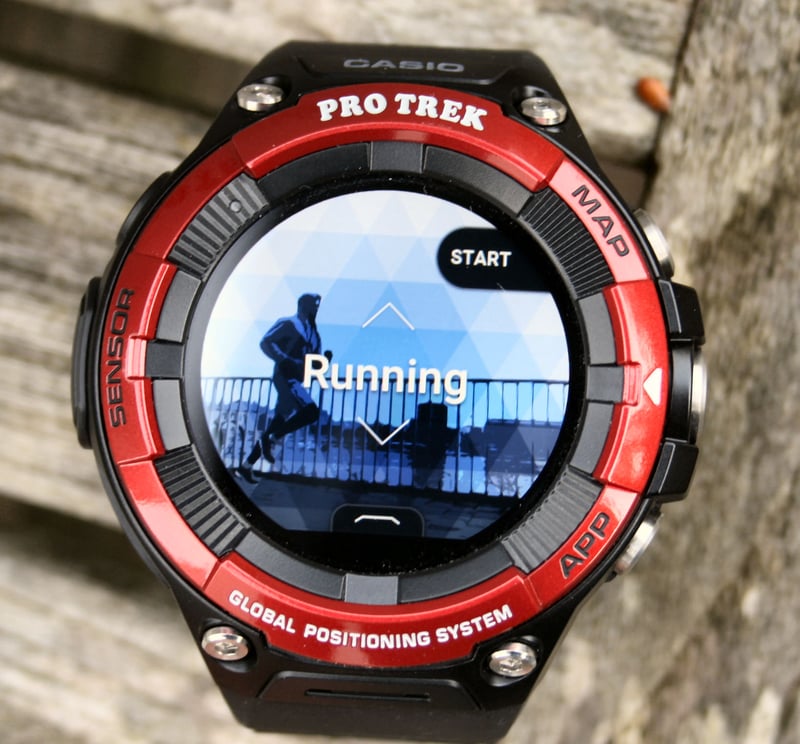
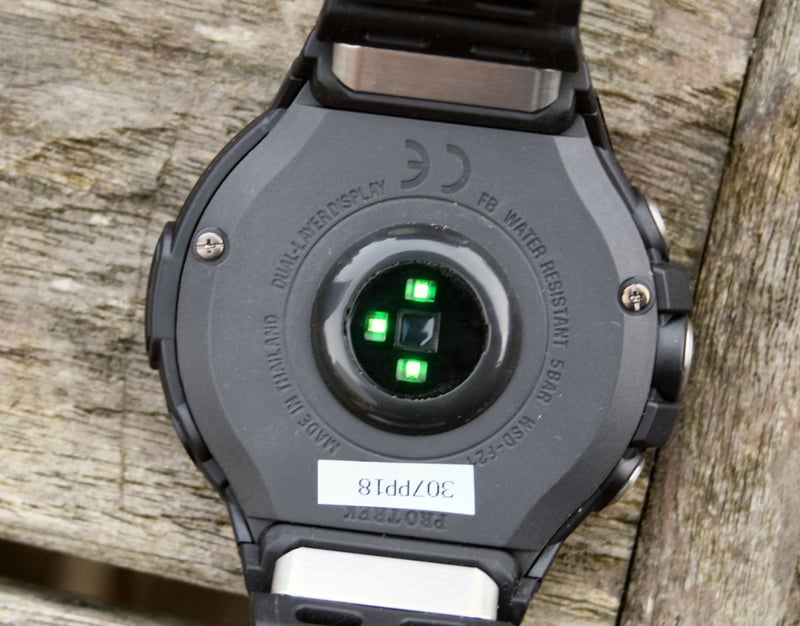
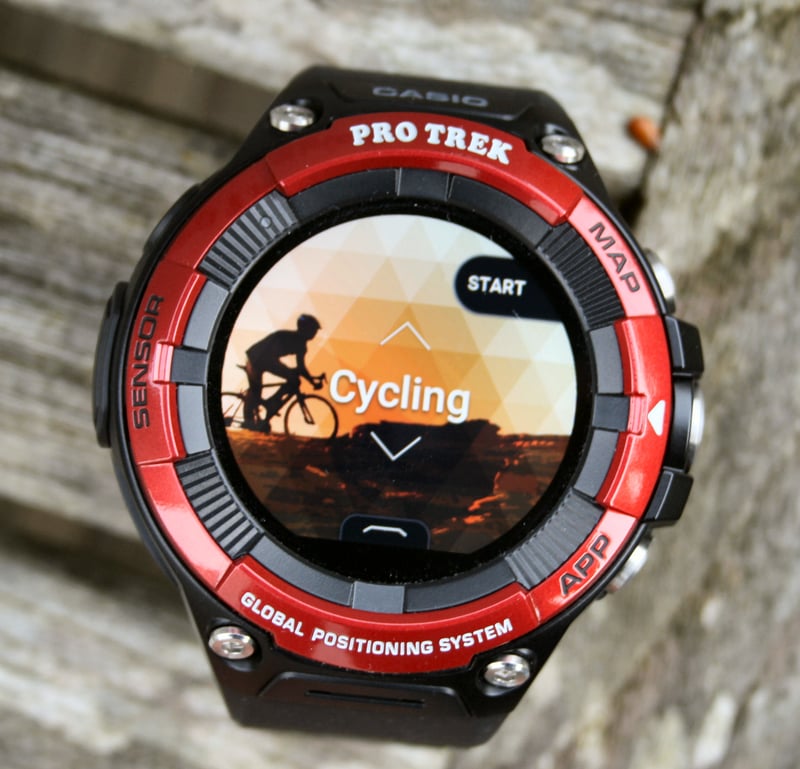
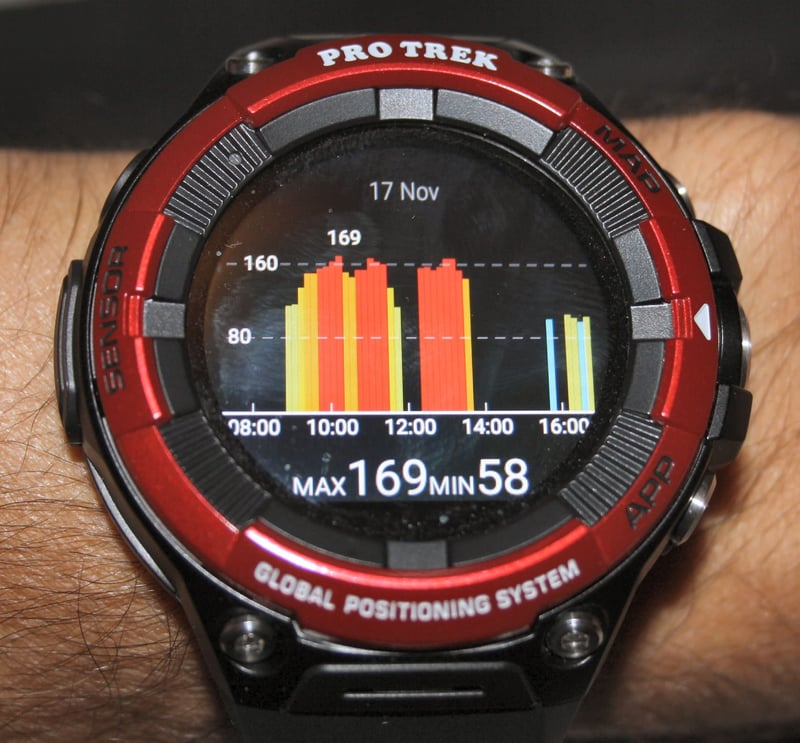
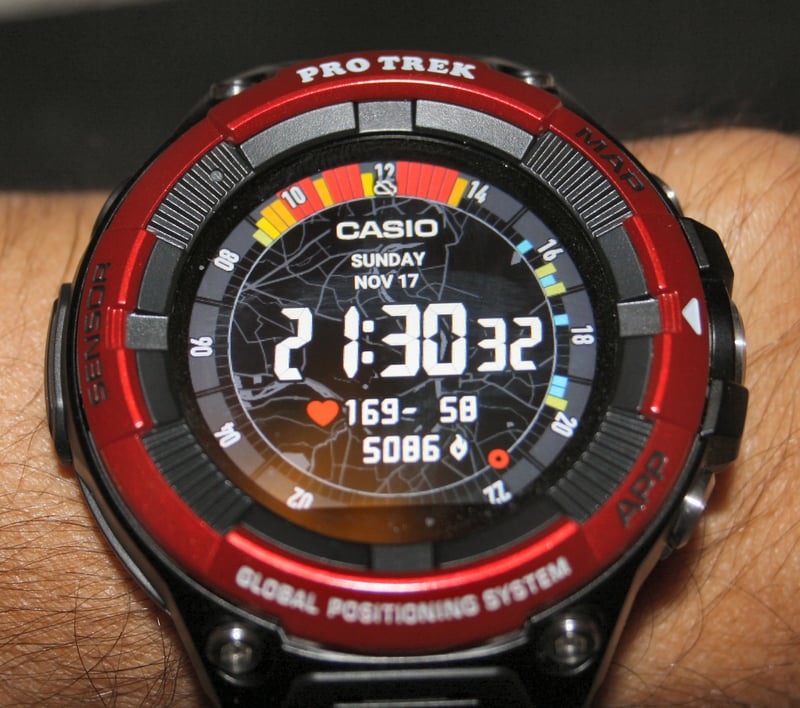
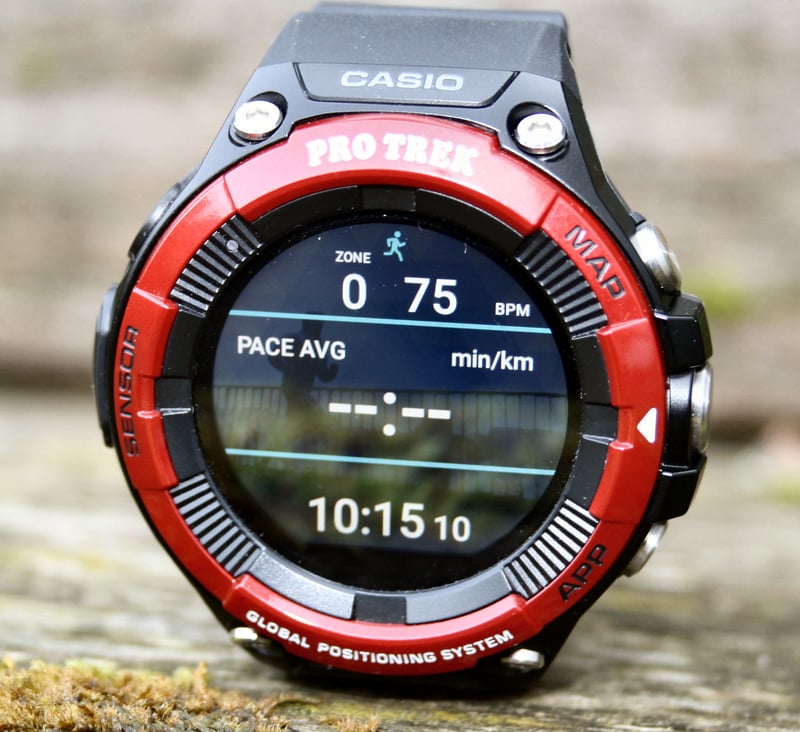

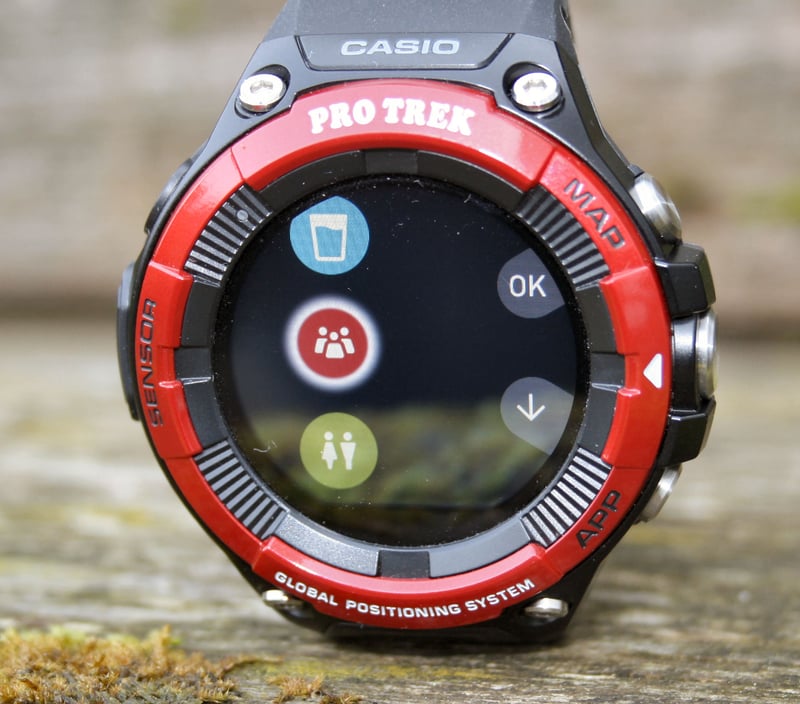
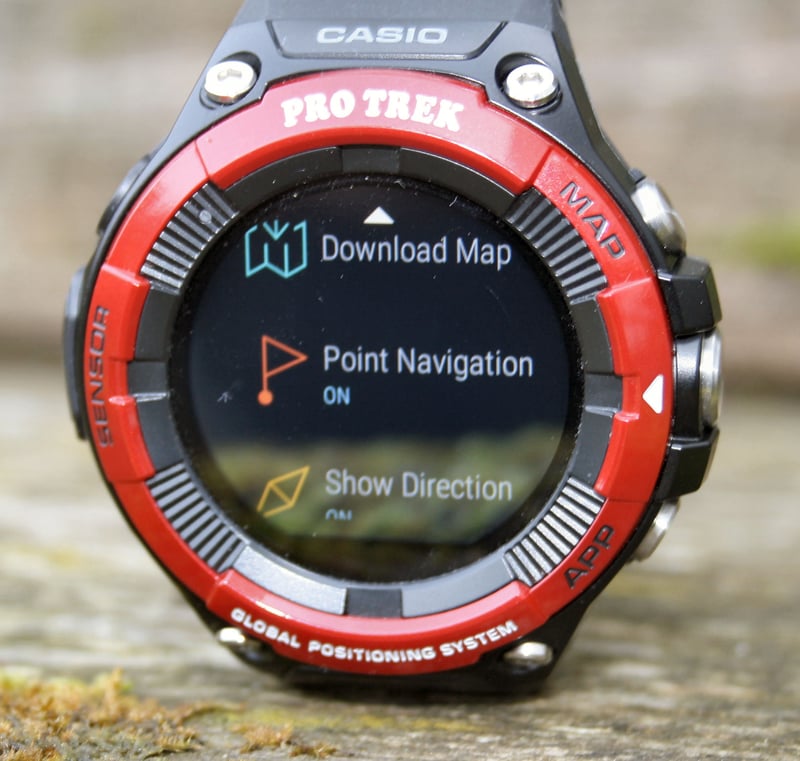
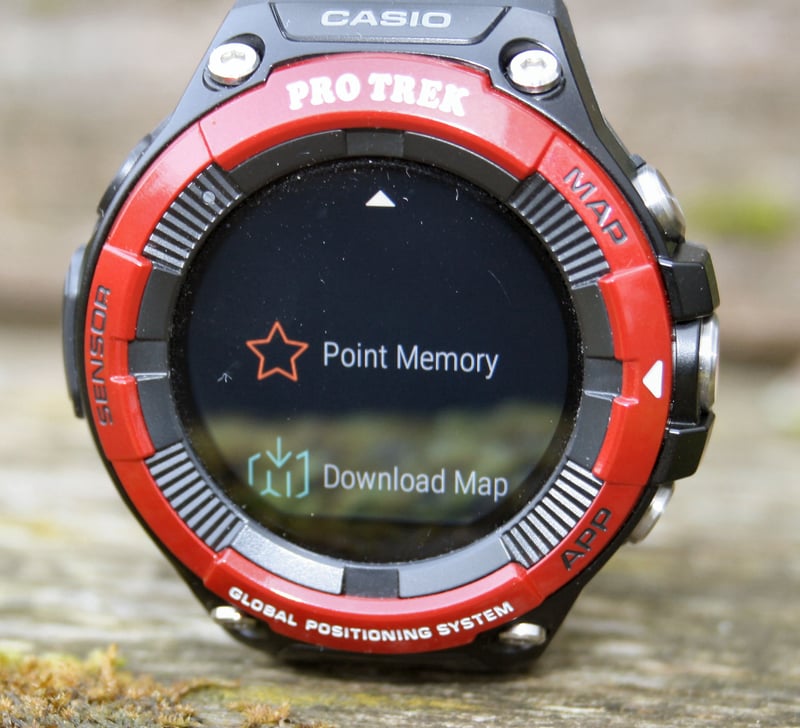







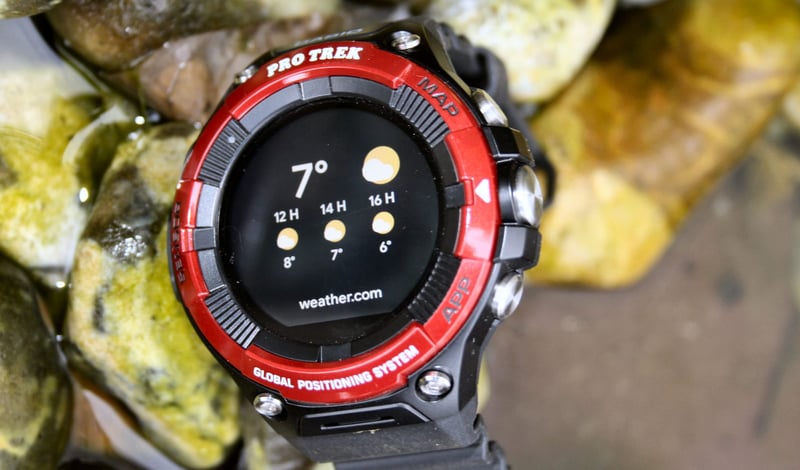
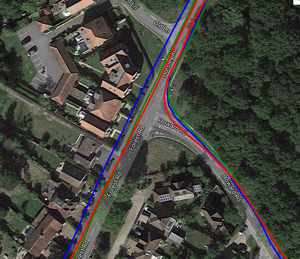
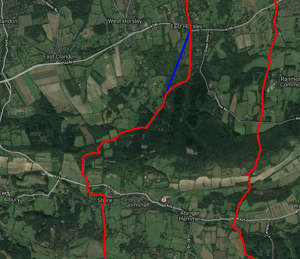
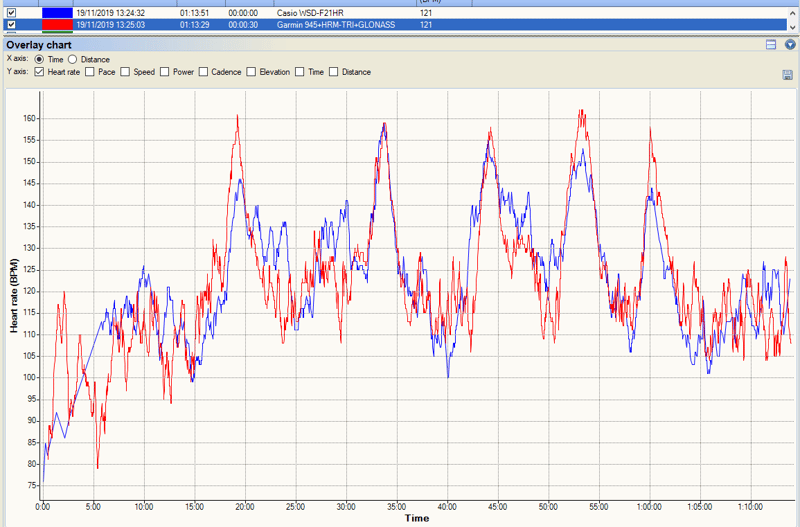
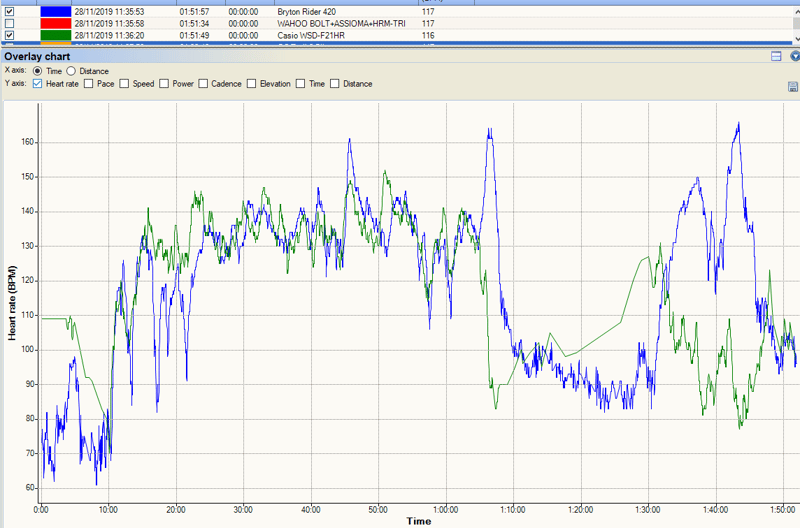

It is clear from the flat tyre shape and the resolution that the display is LCD as it is listed on the manufacturer’s page. Some OLED references from the previous Casio model remained accidentally in the review.
thank you Chris, change made
Thanks for the review. I know it’s a lot of work, but you really can’t find a review like this for Casio (as well as other devices youve reviewed…Amazfit) anywhere. Cheers!
yes, and I make just about zero money out of these reviews of niche products. They take up to a week of work as well. Yes, I’m crazy.
Can you say more about the alerts?
I don’t find anything in the manual?
I am really interested in it because I have had some pretty good experiences with Garmin storm alerts since the F2 in the alps.
look at the casio MOMENT app on the google appstore.
https://play.google.com/store/apps/details?id=com.casio.cwd.wsdapps&hl=en_GB
and/or here
https://support.casio.com/global/en/wsd/manual/wsd-f10_en/DNTXSYfuypmehu.html
Thanks a lot for providing a comparison with other watches in the pro trek series. Most other reviewers haven’t really done that.
you are very welcome
Thanks for thorough review and all your work – have a question about the meaning of ‘HR Measurement’ in comparison chart. Should my wsd-f20 be able to read data from external sensor broadcasting bluetooth (such as Polar H9) using an OS Wear HR monitor app? I see ‘not available’ when trying to pair Polar H9 chest strap. What gives? btw i’m one of the casio aesthetic lovers…
found you ! 😉
sensors: this is from memory – you SHOULD be able to use an app like SPORTYGO (and many others I just know that will work) to pair a sensor like the H9/h10. some apps will not support 3rd party sensors and this might include the inbuilt casio apps which might only support the oHR.
this is the same on other wearOS devices
to be clear: it is the APP that reads it, not the Casio.
success – after purchasing sporty go’s bluetooth sensor package and downloading it to watch the sporty go app scans for and connects to the h9 strap sensor (if the h9 isn’t already connected to my phone – the h9 supports just one connection). thanks much!